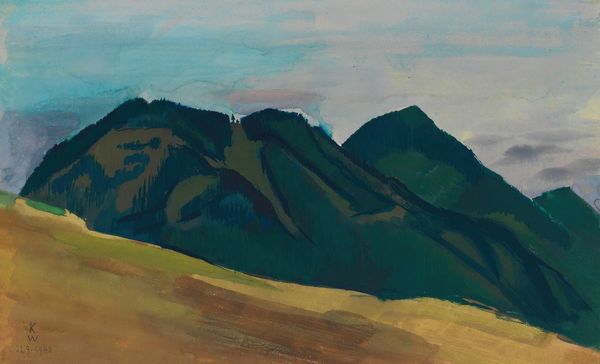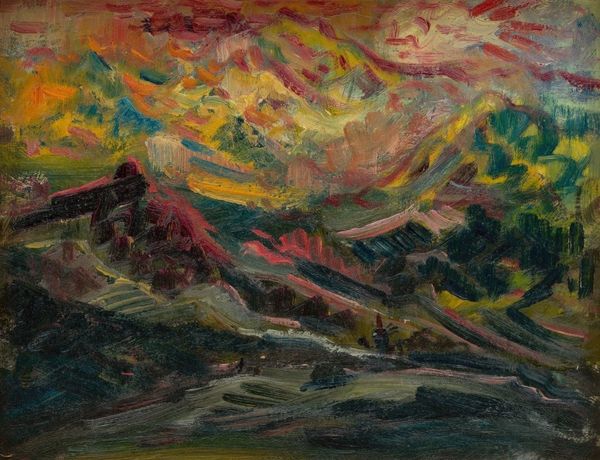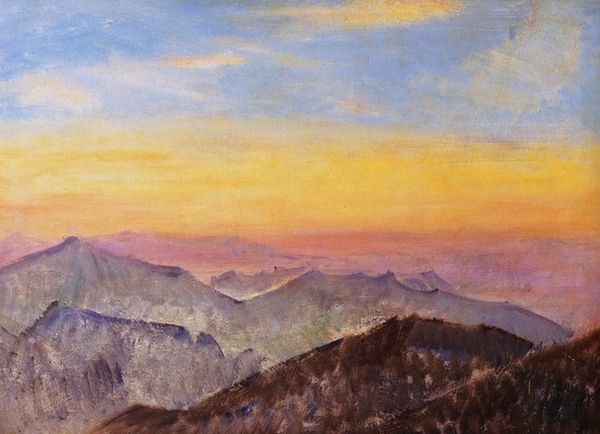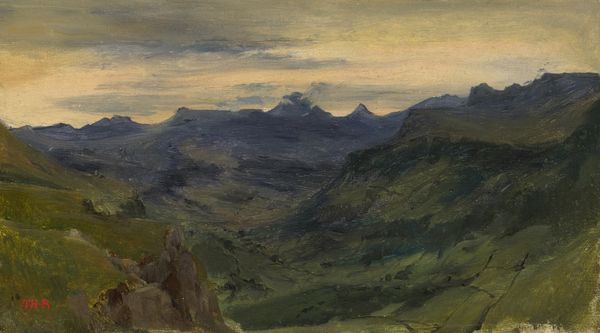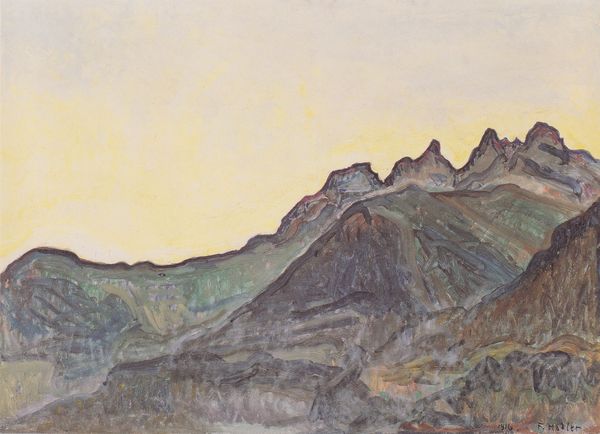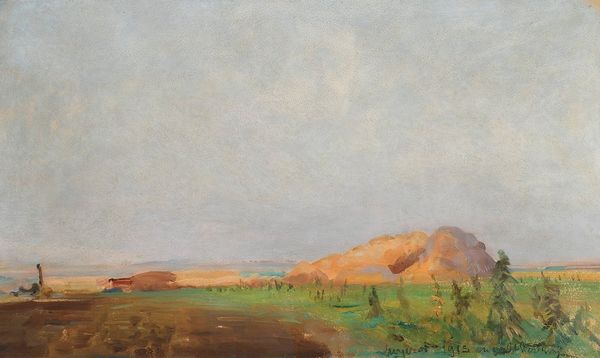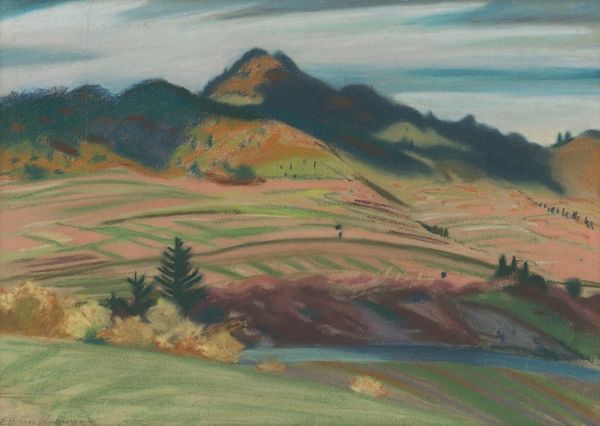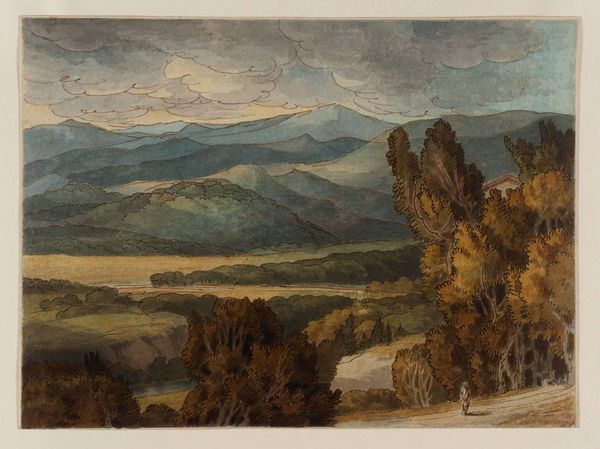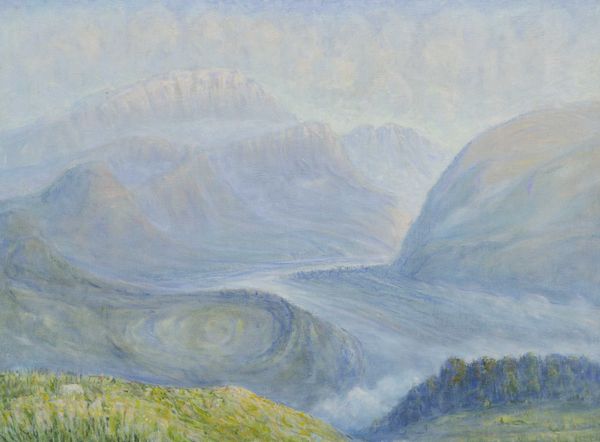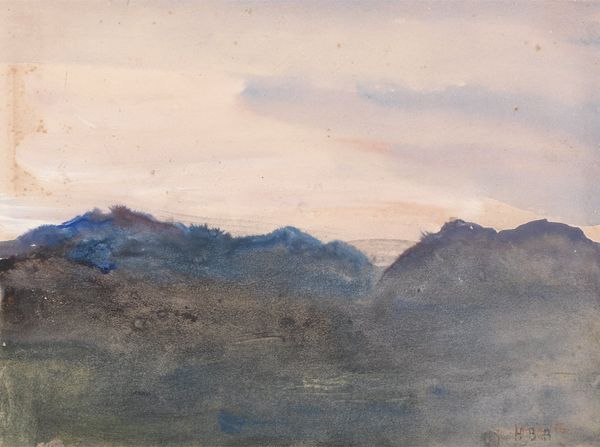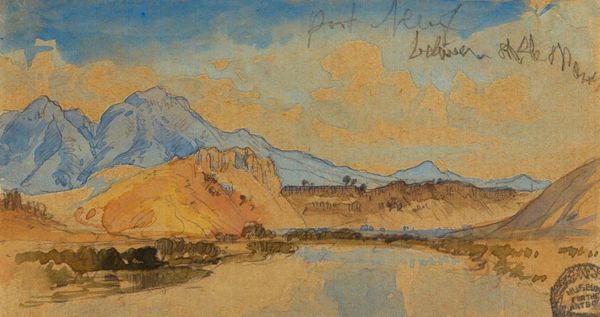
Dimensions: support: 229 x 324 mm frame: 382 x 480 x 90 mm
Copyright: CC-BY-NC-ND 4.0 DEED, Photo: Tate
Editor: Here we have James Dickson Innes's "Arenig, Sunny Evening," held at the Tate. It feels almost theatrical to me, this imposing mountain under such a wispy, dramatic sky. What draws your eye when you look at it? Curator: It's funny you say theatrical; it reminds me of a stage set, too. Innes captures something elemental about the Welsh landscape, but through a very personal lens, wouldn’t you agree? There’s this dance between the solid, almost brooding mountain and the ephemeral, fleeting light. It feels less like a depiction and more like a memory. Editor: I hadn't thought of it as a memory, but that makes perfect sense! Curator: Precisely! And those pink clouds! They just melt my heart. It is like Innes is painting a song of the hills rather than a portrait.
Comments
tate 7 months ago
⋮
http://www.tate.org.uk/art/artworks/innes-arenig-sunny-evening-n05367
Join the conversation
Join millions of artists and users on Artera today and experience the ultimate creative platform.
tate 7 months ago
⋮
During his short life Innes stayed for several seasons in North Wales, close to the Arenig mountains, where he painted these small landscapes on wooden panels. Often they have peculiarly vivid colours, and he simplified the outline of the mountains to a single profile that he drew many times. North Wales was then remote and rarely visited by artists, and was imagined by Innes as a primitive land.Innes was a pioneer in Britain of these directly painted landscapes in strong colours, which he first used in Collioure in the South of France in 1908. He exhibited with the Camden Town Group in 1911, but like Augustus John was only a fringe member. Gallery label, August 2004
